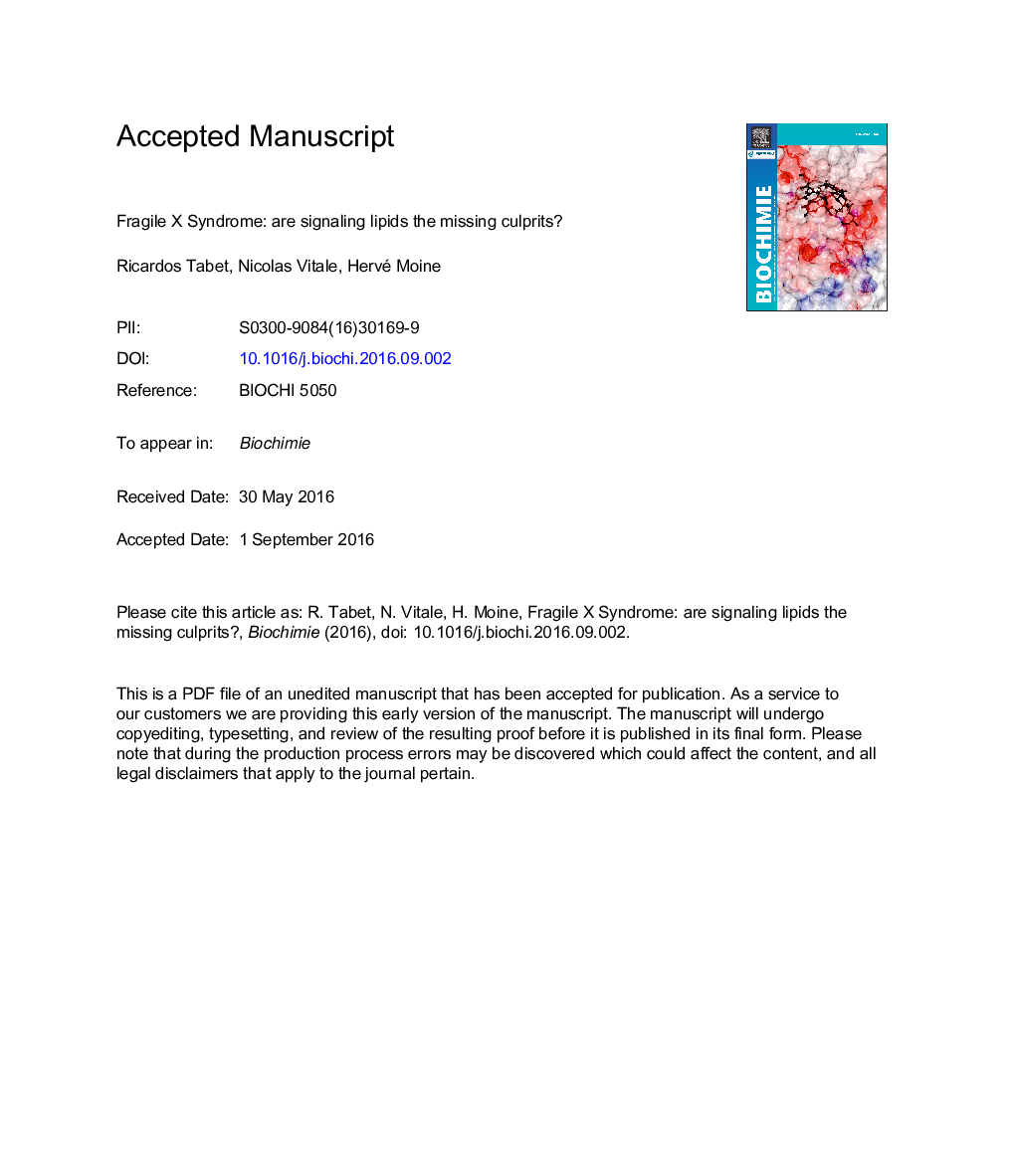| کد مقاله | کد نشریه | سال انتشار | مقاله انگلیسی | نسخه تمام متن |
|---|---|---|---|---|
| 5509062 | 1538402 | 2016 | 22 صفحه PDF | دانلود رایگان |
عنوان انگلیسی مقاله ISI
Fragile X syndrome: Are signaling lipids the missing culprits?
دانلود مقاله + سفارش ترجمه
دانلود مقاله ISI انگلیسی
رایگان برای ایرانیان
کلمات کلیدی
موضوعات مرتبط
علوم زیستی و بیوفناوری
بیوشیمی، ژنتیک و زیست شناسی مولکولی
زیست شیمی
پیش نمایش صفحه اول مقاله

چکیده انگلیسی
Fragile X syndrome (FXS) is the most common cause of inherited intellectual disability and autism. FXS results from the absence of FMRP, an RNA binding protein associated to ribosomes that influences the translation of specific mRNAs in post-synaptic compartments of neurons. The main molecular consequence of the absence of FMRP is an excessive translation of neuronal protein in several areas of the brain. This local protein synthesis deregulation is proposed to underlie the defect in synaptic plasticity responsible for FXS. Recent findings in neurons of the fragile X mouse model (Fmr1-KO) uncovered another consequence of the lack of FMRP: a deregulation of the diacylglycerol (DAG)/phosphatidic acid (PA) homeostasis. DAG and PA are two interconvertible lipids that influence membrane architecture and that act as essential signaling molecules that activate various downstream effectors, including master regulators of local protein synthesis and actin polymerization. As a consequence, DAG and PA govern a variety of cellular processes, including cell proliferation, vesicle/membrane trafficking and cytoskeletal organization. At the synapse, the level of these lipids is proposed to influence the synaptic activation status. FMRP appears as a master regulator of this neuronal process by controlling the translation of a diacylglycerol kinase enzyme that converts DAG into PA. The deregulated levels of DAG and PA caused by the absence of FMRP could represent a novel therapeutic target for the treatment of FXS.
ناشر
Database: Elsevier - ScienceDirect (ساینس دایرکت)
Journal: Biochimie - Volume 130, November 2016, Pages 188-194
Journal: Biochimie - Volume 130, November 2016, Pages 188-194
نویسندگان
Ricardos Tabet, Nicolas Vitale, Hervé Moine,